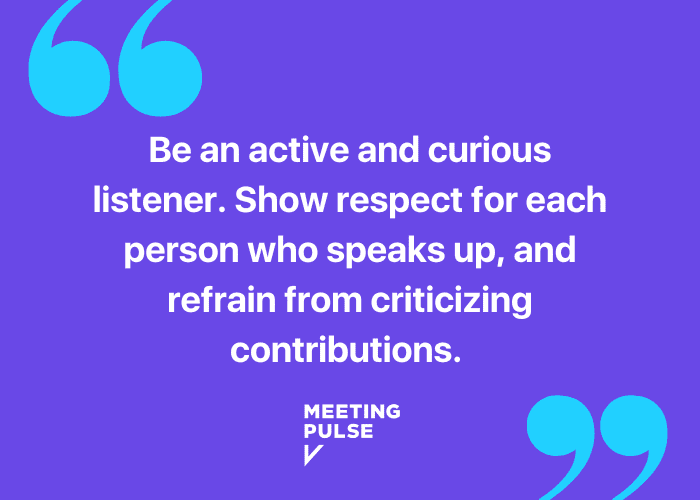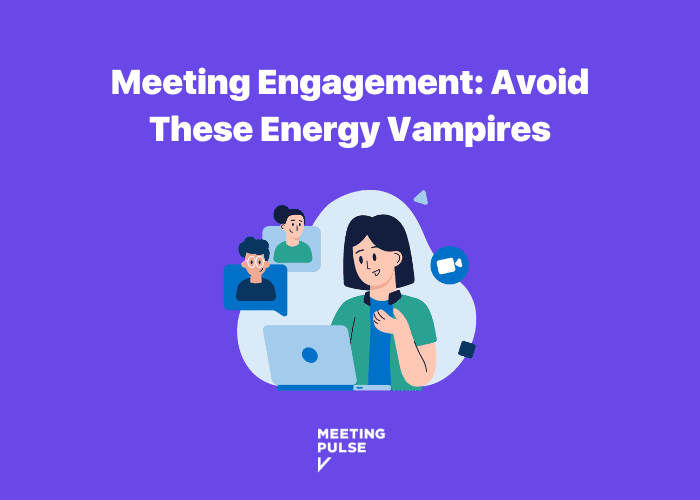How many times have you been to a work meeting that you weren’t totally plugged into? It happens to all of us — probably more times than we care to admit. That’s why if you’re hosting staff meetings, meeting engagement should be top of mind when you start planning your next gathering.
And don’t assume that remote teams can’t have engaging meetings. Data from a recent study shows that 78% of corporate companies use video calling software for remote meetings. Also, 67% of employees say they are more likely to contribute to team meetings via video conference call.
Whether everyone is in the same room or people are connecting virtually, one of the top priorities of a leader is to keep the team engaged.
What is meeting engagement?
Meeting engagement is a term that describes how meeting participants interact with one another and with the information being presented. Think of it as the moving force of a productive, successful meeting.
Positive employee engagement can be seen in the participants’ behaviors. They are actively listening and paying attention, speaking and working together, asking questions, taking notes, and discussing different opinions. And they are presenting new ideas. These are all attributes of a great meeting.
Then, there are behaviors that drain energy and thwart engaging meetings. Meeting leaders might have nightmares about these: people talking out of turn, interrupting, complaining, being argumentative, checking emails or texts, distracting others, having unrelated side conversations, or simply not paying attention.
What prevents meeting engagement?
Let’s look at some common reasons why a team member might have difficulty engaging during a meeting. At the same time, we’ll identify ways to engage employees who aren’t as dialed in as you’d like them to be.
People are not prepared
When employees show up to a meeting unprepared, it can quickly derail the agenda and waste a lot of time. That’s the last thing any meeting host wants, and there are some steps you can take ahead of time to lessen the likelihood of this happening.
- Give advanced notice. When your team knows about the meeting long before it happens, you’re giving them ample time to show up on time and prepare.
- Distribute an agenda ahead of time. Not only should you let your team know that the meeting is on the books, but including an agenda for the meeting will give your employees a heads up about the subject matter. With this information in hand, they can start thinking about the meeting content and have a chance to come ready to contribute ideas and thoughts. They’ll also have a timeline for how long the meeting will run and can plan their day accordingly, ensuring that unexpected time in the meeting doesn’t wreck their schedule.
- Assigning pre-work. Sharing any related materials such as reports or educational materials ahead of the meeting will let your employees do a little work in advance. This will mean they can arrive ready to engage and with an understanding of what will be discussed.
MeetingPulse allows for an agenda and schedule to be easily shared ahead of time and accessed during the meeting. Hosts can also distribute materials to attendees before, during and after the meeting.
Uncertainty about participating
Think about a time you were invited to a meeting and you weren’t sure why you should be there or what was expected of you as an attendee. It can be frustrating — and even overwhelming — to feel that kind of uncertainty. As a meeting leader, it’s your responsibility to let attendees know what kind of participation you’re looking for. You can do this by:
- Outlining the kind of feedback you’re looking for. There’s no better way to get the information you seek than by telling the involved parties exactly what you’re looking for. Doing so will give them better guidance and they’re likely to be more confident in the thoughts or ideas they offer up.
- Setting ground rules for etiquette. Let the group know what your standards are. Do you expect them to leave their cellphones behind? Do you insist that people take turns sharing ideas, rather than call them out as the ideas come up? Ground rules will give all attendees a solid understanding of how to best proceed while providing a safe and comfortable environment for all.
- Identify meeting roles. If you have jobs to be performed during the meeting — like note-taking — assign those duties at the start of the meeting.
With MeetingPulse, you can define roles and allow for participants to easily contribute their thoughts and ideas through chat features, polls, surveys, or live sentiment analysis.
No one is asked for ideas
When a host does little more than talk, talk, talk the entire meeting, the attendees are not likely to stay engaged. To pull people into a meeting and raise their energy, ask them questions.
- Make engagement part of your agenda. When you distribute the agenda ahead of your meeting, identify opportunities for participants to engage. Let them know that you will be asking for their ideas on certain areas. And mention how you’ll allow for those ideas to be shared.
- Ask for engagement. That’s right. Ask your attendees to participate by asking them questions. Ask participants at random or ask every person to answer a question, one by one. (One thing to remember, though, is that you don’t want to ask questions that might put people on the spot.) By asking good, open questions of your participants — especially those who don’t speak up as frequently — you can increase the diversity of thought in your meeting and provide opportunities for lesser-heard voices to contribute.
- Allow for questions. Give employees several opportunities to ask questions throughout the meeting — not just at the end. By allowing for questions more frequently, attendees are more likely to ask about specific items. Waiting until the end of the meeting to invite questions can discourage attendees from opening up. By then, they might be pressed for time or might have forgotten about items discussed earlier in the meeting.
With MeetingPulse’s many modules, meeting hosts can let meeting attendees engage in a number of ways. Participants will not only be able to participate in polls as mentioned above. Hosts can use tools like Q&As, dynamic surveys, brainstorm sessions, and quizzes to make communicating simple for everyone involved.
Uncomfortable speaking up
Not everyone likes to share the spotlight. Some employees aren’t as comfortable voicing their ideas in front of a group. To create a safe an inclusive space, you can:
- Give participants the option of turning off their cameras. Not everyone is comfortable appearing on video screens. If it’s not necessary for the meeting, let the participants know it’s OK if they don’t want to turn on their cameras.
- Allow for discussion via chat. Keeping the chat function available can make participants feel less vulnerable.
- Be an active and curious listener. Show respect for each person who speaks up, and refrain from criticizing contributions.
MeetingPulse can help to preserve psychological safety by allowing participants to contribute anonymously, which increases the likelihood that they’ll share their ideas. Participants also can use our chat feature, rather than speak directly to the group or appear on video.


Show appreciation
Saying “thank you” or “that’s a good idea” can go a long way when it comes to encouraging engagement. It also signals to participants what kind of engagement a host is looking for.
Some people won’t mind speaking up. For others, it can take a little bravery. Showing your appreciation is a good way to encourage every participant to contribute.
Also, take notes as participants are sharing ideas. It will show that you’re listening and that you value their input.
Using MeetingPulse will help you moderate and energize meeting discussions. Hosts can also create reports on the meeting, including participant activity and poll results, to be used afterward.
Meeting adjourned
There are many ways to increase meeting engagement and many tools available to help. With the right service and a little work ahead of time, you can engage participants before, during and after your next meeting. The modules that MeetingPulse offers can help you to maximize participation, understanding, communication and, as we’ve outlined above, engagement.





















